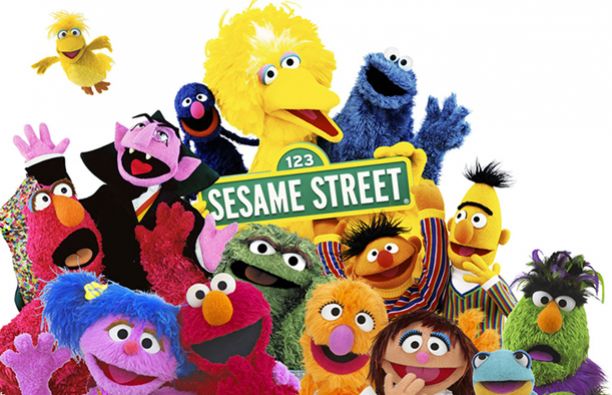
Sesame Street
We are in the twentieth century in the United States. Several societal debates are agitating the country, but one of them is of particular interest to sociologists and teachers: school failure. Indeed, following various changes in the school curriculum, inequalities are widening and several sociologists realize that primary education is essential and that after this stage it is almost impossible to redress the bar. To understand what is wrong, they will visit several homes and realize that in the most modest homes, children are devoid of abstract ideas and only work on the concrete ("What are we eating?" "What is this movie? ”But not“ What is friendship? ”,“ How to make the world a better place ”.)
Children's Television Workshop (CTW), a non-profit association, will then embrace one of the major tools of the 60's: television. Between 1966 and 1968, this association will collect funds and develop a series that it presents as "one of the major developments of the decade for television". It will be Sesame Street, the first episode of which will be broadcast in 1969.

From the first episode, one of the major challenges of the series is to succeed in retaining the attention of young children when an episode was an hour long. To do this, the series will vary the situations, but also the techniques (puppets, animation, live action).
Maintaining attention has been, is, and always will be, one of the challenges of television, but unlike many programs that are designed to create brain time, Sesame Street is there for a specific purpose: to educate.

If the name of Jim Henson may not ring a bell, you must know his work. This genius puppeteer is indeed behind the Muppet show, Dark Crystal, Labyrinth and of course Sesame Street
Today in its 51st season, it is an understatement to say that the series is an unparalleled success, in the United States in any case ...

From 1974, the "third color channel of the ORTF" (which would become FR3 then France 3) decided, under the leadership of Christophe Izard, to adapt Sesame Street for the French public. The 21-minute episodes of "Bonjour Sesame" feature 13 minutes of Sesame Street dubbed in French, a 4-minute animal documentary. To fill the remaining 4 minutes, the team then invented "L'île aux enfants" ...

What had to happen happened and from 1975 Bonjour Sesame was replaced by the island of children while keeping a small segment in the show, segment which will disappear the following year.
In 1978, TF1 did not want to let the rights fall into the hands of the competition and launched the first French adaptation of Sesame Street under the name "1 rue Sesame". The show will last until 1982.
From 1992 to 2005, it is again the redoubled American show which is on France 3, but in 2005, France 5 presents 5 rue Sesame, a new adaptation.

We could talk for a long time about what Sesame Street to spawn as spinoffs, video games, an animated series, and even a (sublime.) Lego set, but we're on Artoyz and what we're interested in here are the minifigures. .



Let's start with the most obvious: the UDFs from Medicom Toy which recently released series 2 with the characters of:
- Grover
- Count Von Count
- Abby
- Elmo & Cookie Monster
- Oscar the Grouch (original)
In the form of the Blind Box, the series is of course not left out with a XXXray series and a classic series. Both are unfortunately sold out, but it would have been unfortunate not to mention them.


However, let's stay with Jason Freeny with two of his most beautiful pieces. The first is none other than the Cookie Monster in its monochrome version ... But always with its cookie.
The other is Oscar the Grouch, and his hilarious dissected trash.
And since you took the trouble to go to the end of the article, here is an exclusive visual of Bearbrick Sesame Street which will be released tomorrow. It will be offered in 1000% and 400% versions.


Our coolest products




































Leave a comment
This site is protected by hCaptcha and the hCaptcha Privacy Policy and Terms of Service apply.